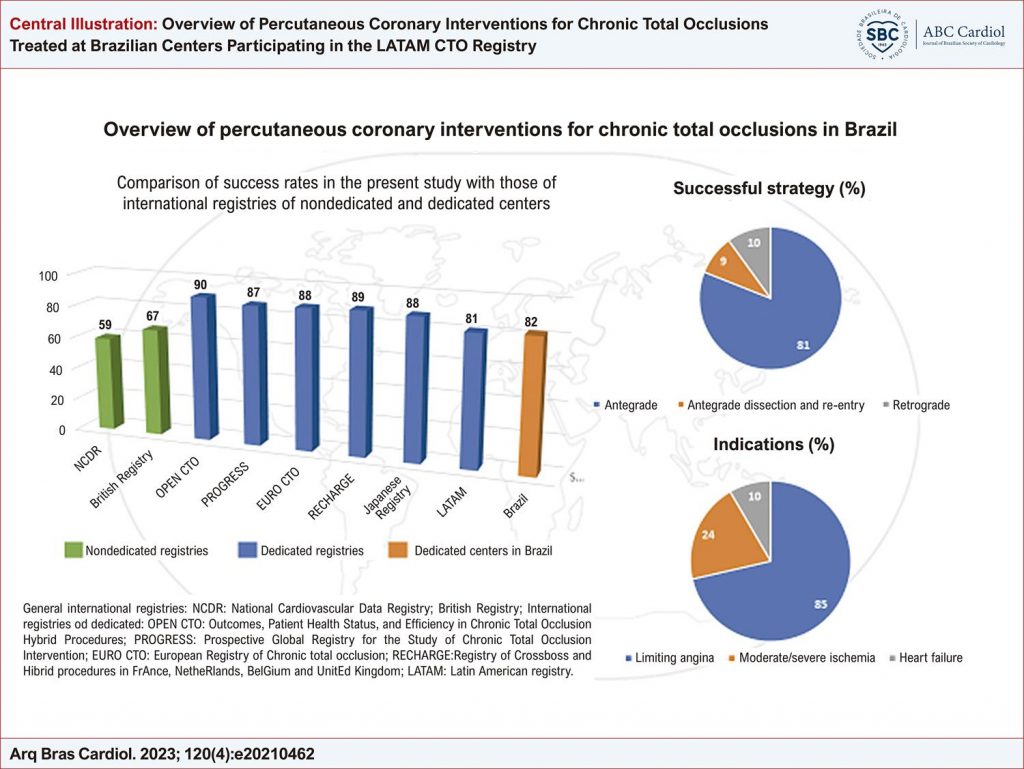Arq. Bras. Cardiol. 2023; 120(4): e20210462
Overview of Percutaneous Coronary Interventions for Chronic Total Occlusions Treated at Brazilian Centers Participating in the LATAM CTO Registry
This Original Article is referred by the Short Editorial "Brazilian Interventional Cardiology and Chronic Coronary Occlusions: Where Are We?".
Abstract
Background
Major advances have been seen in techniques and devices for performing percutaneous coronary interventions (PCIs) for chronic total occlusions (CTOs), but there are limited real-world practice data from developing countries.
Objectives
To report clinical and angiographic characteristics, procedural aspects, and clinical outcomes of CTO PCI performed at dedicated centers in Brazil.
Methods
Included patients underwent CTO PCI at centers participating in the LATAM CTO Registry, a Latin American multicenter registry dedicated to prospective collection of these data. Inclusion criteria were procedures performed in Brazil, age 18 years or over, and presence of CTO with PCI attempt. CTO was defined as a 100% lesion in an epicardial coronary artery, known or estimated to have lasted at least 3 months.
Results
Data on 1196 CTO PCIs were included. Procedures were performed primarily for angina control (85%) and/or treatment of moderate/severe ischemia (24%). Technical success rate was 84%, being achieved with antegrade wire approaches in 81% of procedures, antegrade dissection and re-entry in 9%, and retrograde approaches in 10%. In-hospital adverse cardiovascular events occurred in 2.3% of cases, with a mortality rate of 0.75%.
Conclusions
CTOs can be treated effectively in Brazil by using PCI, with low complication rates. The scientific and technological development observed in this area in the past decade is reflected in the clinical practice of dedicated Brazilian centers.
836

